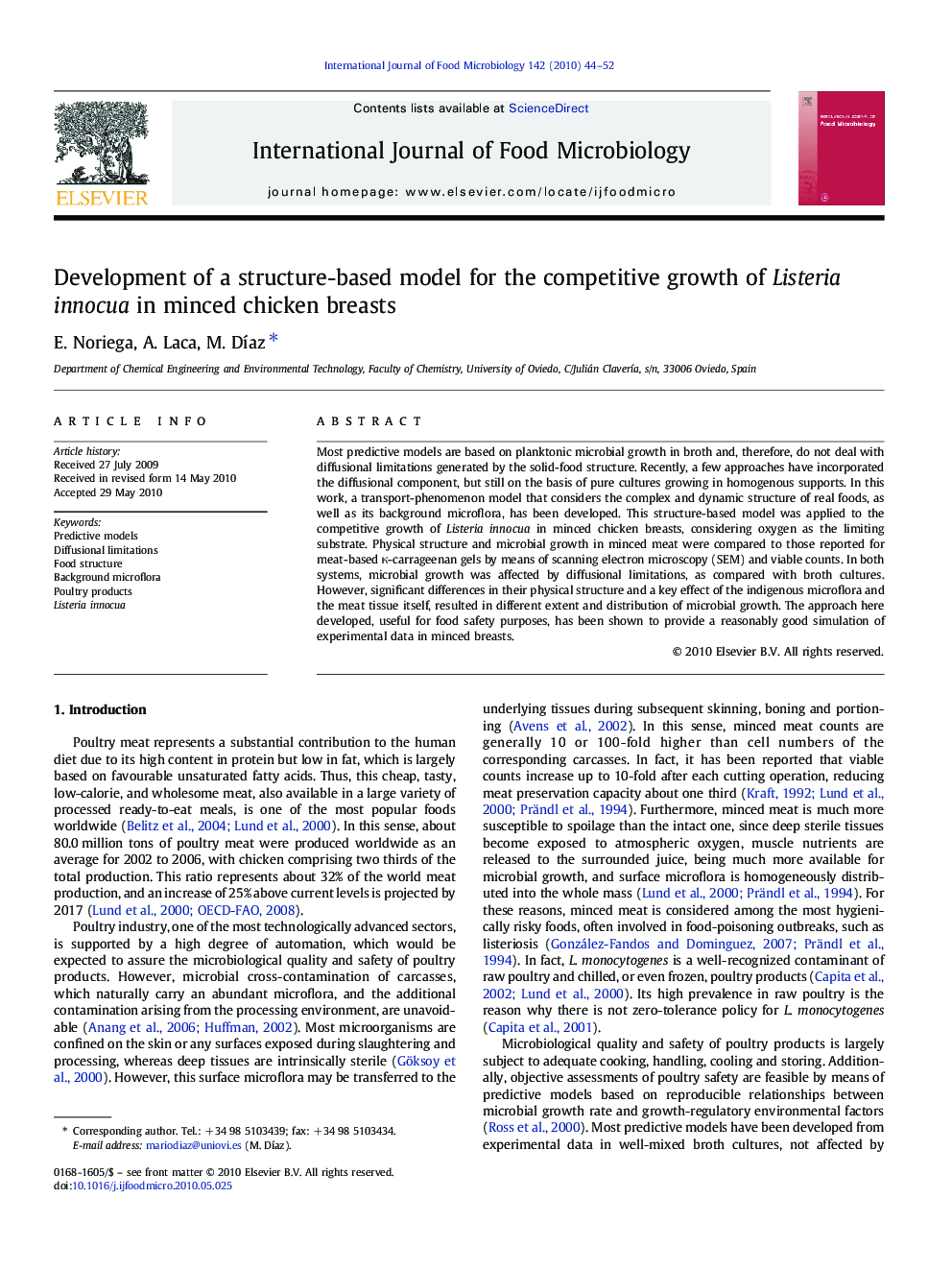| Article ID | Journal | Published Year | Pages | File Type |
|---|---|---|---|---|
| 4368001 | International Journal of Food Microbiology | 2010 | 9 Pages |
Most predictive models are based on planktonic microbial growth in broth and, therefore, do not deal with diffusional limitations generated by the solid-food structure. Recently, a few approaches have incorporated the diffusional component, but still on the basis of pure cultures growing in homogenous supports. In this work, a transport-phenomenon model that considers the complex and dynamic structure of real foods, as well as its background microflora, has been developed. This structure-based model was applied to the competitive growth of Listeria innocua in minced chicken breasts, considering oxygen as the limiting substrate. Physical structure and microbial growth in minced meat were compared to those reported for meat-based κ-carrageenan gels by means of scanning electron microscopy (SEM) and viable counts. In both systems, microbial growth was affected by diffusional limitations, as compared with broth cultures. However, significant differences in their physical structure and a key effect of the indigenous microflora and the meat tissue itself, resulted in different extent and distribution of microbial growth. The approach here developed, useful for food safety purposes, has been shown to provide a reasonably good simulation of experimental data in minced breasts.
